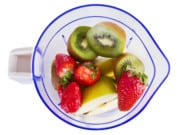Us humans have quite a sweet tooth. We always have, and we probably always will. Historically, we’ve evolved to go head over heels for anything sweet for very logical reasons. Any food that’s sweet is surely a good source of energy, and because sugar has antibacterial properties, most sweet foods are safe to eat as well. So anytime our ancestors stumbled upon something sweet, their brains told them, “Eat, eat eat!” Of course, prehistorically, this usually took the form of fruits, something that’s good for you and not only contains some sugar, but also lots of vitamins and minerals. In many ways though, we’ve outgrown this evolutionary mechanism and it now works to our detriment. Food is now abundant, and binging on sweet foods will lead us closer to death instead of ensuring our survival. But that said, we humans still love our sweet foods and natural, artificial, and man-made sweeteners are ubiquitous in the marketplace.
One new popular and trendy sweetener is agave nectar. Made from the same plant that tequila is made from, the agave plant is native to Mexico, South America, and the southwestern U.S. Although often billed as a “natural sweetener,” agave nectar is produced using a chemical and enzyme-based process similar to the one used to convert corn starch into high fructose corn syrup. The root bulb of the agave plant is somewhat similar to a pineapple and it is from this that agave nectar is made. The Mexican culture has historically used a sweetener called “miel de agave,” but this is different than agave nectar and more closely resembles something akin to a Mexican version of maple syrup.
From a culinary standpoint, agave nectar does have a variety of uses and has some unique flavor and textural properties. Agave nectar is somewhat similar to honey, but has a much milder flavor, and a less viscous and thinner texture. Agave also dissolves better than honey, especially in cold drinks which makes it a popular sweetener for things like iced tea and margaritas. Agave nectar is even sweeter than table sugar (by about 1.5 times), so a little of it goes a long way. Unlike honey, no animal is involved in the production of agave, making it popular among vegans. And because agave nectar is produced using no more heat than 118 degrees Fahrenheit, raw foodists consider it raw enough. Agave nectar comes in a variety of colors, the lightest of which are the mildest and most delicate in flavor, and the darkest of which have a stronger flavor with more caramel notes.
However, from a nutritional and health-conscious perspective, agave nectar is really no better for you than other sweeteners. In fact, it may actually be worse. All carbohydrates eaten by humans are predominantly made of two molecules, glucose and fructose. Things like rice and potatoes are made of primarily glucose, while table sugar is half glucose and half fructose. The dreaded high fructose corn syrup is 55% fructose, 45% glucose. So where does agave nectar fit in? The amount of fructose in agave nectar varies, but it usually is at least 70% fructose and can be as high as 90% fructose in some cases. Fructose has little impact on blood sugar, giving it a low glycemic index, as it is sent to the liver first for processing. At first blush, this may seem beneficial for diabetics, and agave nectar is billed as a “diabetic safe” alternative. But largely because of high fructose corn syrup, we are learning about the dangers of fructose, especially in high concentrations like those found in agave nectar. High fructose has been linked to a variety of serious health concerns. Over-consumption of fructose seems to lead to more visceral fat, the unhealthiest kind of fat that centers on your midsection and leads to other health complications. High fructose consumption has also been linked to insulin resistance, the kiss of death that predisposes one to a vast array of serious health concerns including metabolic syndrome, type 2 diabetes, and heart disease. Suffice it to say that when your body stops processing sugar well, you’re in for big trouble, and over-consumption of fructose puts you right behind the 8-ball.
So ultimately, be wary of agave nectar. Just because it’s trendy and is associated with buzz words like “raw” and “organic” and “all-natural” doesn’t mean it’s healthy. Its extraordinarily high amount of fructose can lead to a variety of serious health complications. If you’re freaking out about high fructose corn syrup (55% fructose, 45% glucose), then you should be downright terrified of agave nectar which is usually between 70-90% fructose. As with most things, in moderate amounts, agave nectar is fine. But it isn’t any healthier than regular table sugar, corn syrup, or maple syrup. Overall, the best plan is to use all sweeteners in moderation, cut them out wherever possible, and try to ultimately “train” your palette to not need as much sweetness. Thousands and thousands of years ago, we needed that love and addiction to sweet foods in order to survive, but nowadays those cravings are leading to poor human health and increased mortality, not the other way around.
Article Courtesy: Andrew Steingrube







Let Us Know What You Think